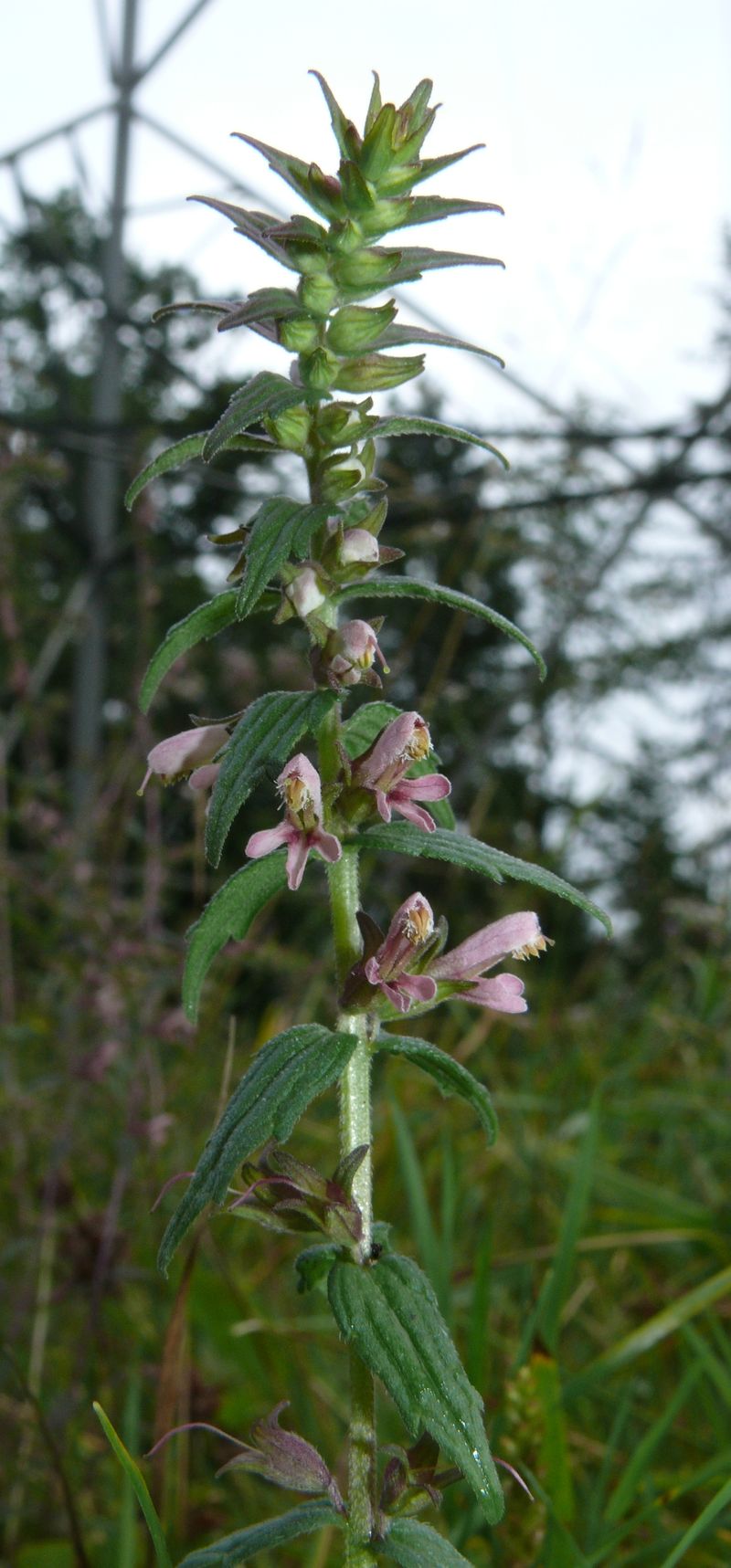Red Bartsia

Red Bartsia
(Odontites serotina)
Priority: - Prevent / EDRR
Tags: Agricultural
Identification and Reproduction
Identification:
- Red bartsia is a flowering plant that grows between 10-50 cm tall.
- Grows from erect stems that are hairy and sometimes branched.
- Leaves are hairy, lance-shaped and have 2-3 blunt teeth. They are about 3 cm in length and clasp onto the stem.
- Produces flowers that are dark pink to purple and resemble snapdragon flowers. They grow in a spike along the stem. Blooms occur from June through to September.
Reproduction:
- Red bartsia reproduces by seed. Each plant can produce up to 1,400 seeds in a year.
- Seeds are easily dispersed and transported. Seeds can float and have coarse hairs that cling to fur, clothing, equipment and hay bales.
Habitat & Ecology
- It can establish successfully in low-fertility soils.
- This plant thrives in dry sites that are exposed to full sun.
- Commonly found in pastures, hayfields and roadsides.
- It is also a hemiparasite and can feed on the roots of some grasses and forbs when environmental conditions are not favourable.
- Has not been oberved in British Columbia but is currently throughout Manitoba.
Impacts
Social:
- Outcompetes foraging species, decreasing and degrading available forage opportunities.
- It spreads rapidly, causing forage losses of 50-70%.
- Impalatable to livestock.
Ecological:
- Overtake native grasslands.
Management
Prevention is a high priority for this plant.
- Inspect and clean all equipment, clothing and vehicles before leaving an infested site.
- Prevent accidental baling of red bartsia as this will accidentally transport the plant.
- Ensure hay bales are weed-free.
- Purchase certified, high-quality seeds.
- Maintain healthy pastures.
- Planting competitive crops is a preventative measure.
- Contact your local Canadian Food Inspection Agency (CFIA) if you think you have seen this plant.
Resources
Download the Saskatchewan Invasive Species Council's factsheer on Red Bartsia here.
For more details on seed identification for Odontites vernus serotinus please check out the CFIA's Weed Seed: Red bartsia.
Header photo (Bernd Haynold).




